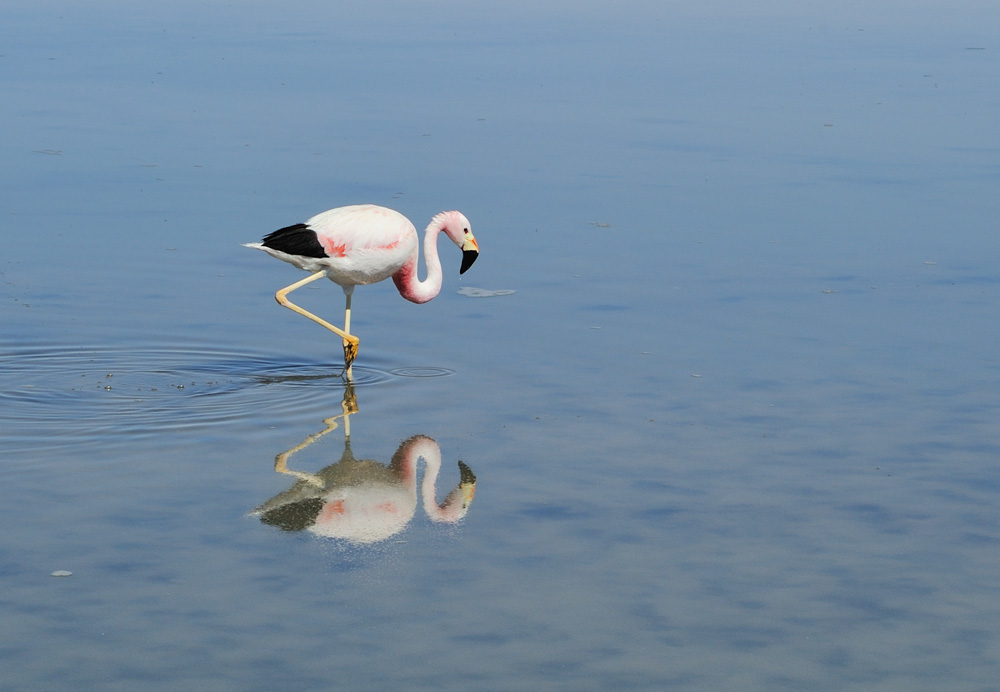
Atacama. Horned coots
Atacama. Cerro Toco
Atacama. Vado Putana
Atacama. Geyser Valley El Tatio
Atacama. San Pedro and Laguna Cejar
Next day after Cerro Toco we for the second time moved in the direction of Solar-de-Atacama, but in this time to its far end, Laguna Chaxa. Our main aim was flamingo. Solar-de-Atacama is a part of the Los Flamencos National Reserve. This reserve combines several flamingo habitats in Atacama desert. The attentive reader can note that we already met flamingos and even not once, however, every time we saw them quite far from us, and Laguna Chaxa promises them very close, and we couldn’t resist checking.
As I alredy said, Solar-de-Atacama is a huge salinland,
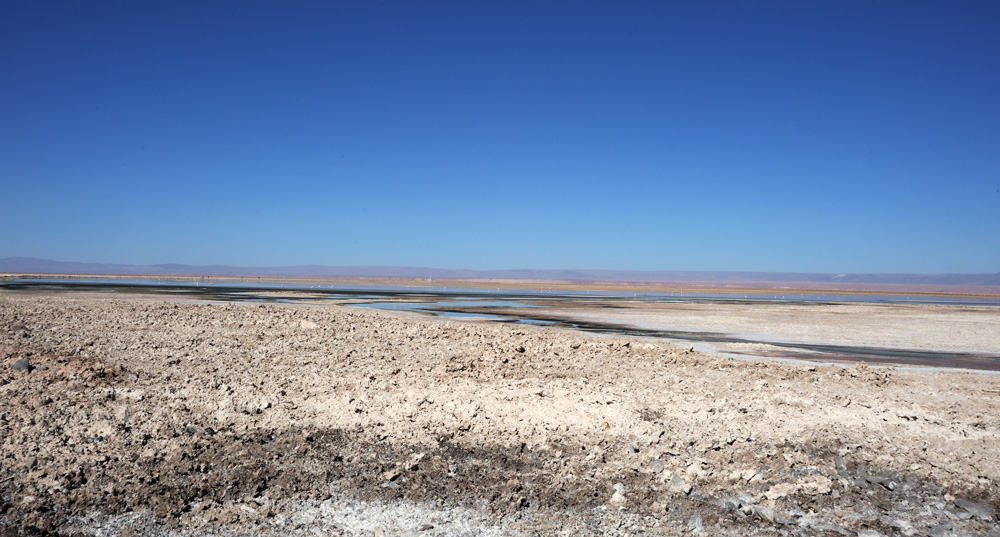
that is significantly dried out because of the middle of the summer.
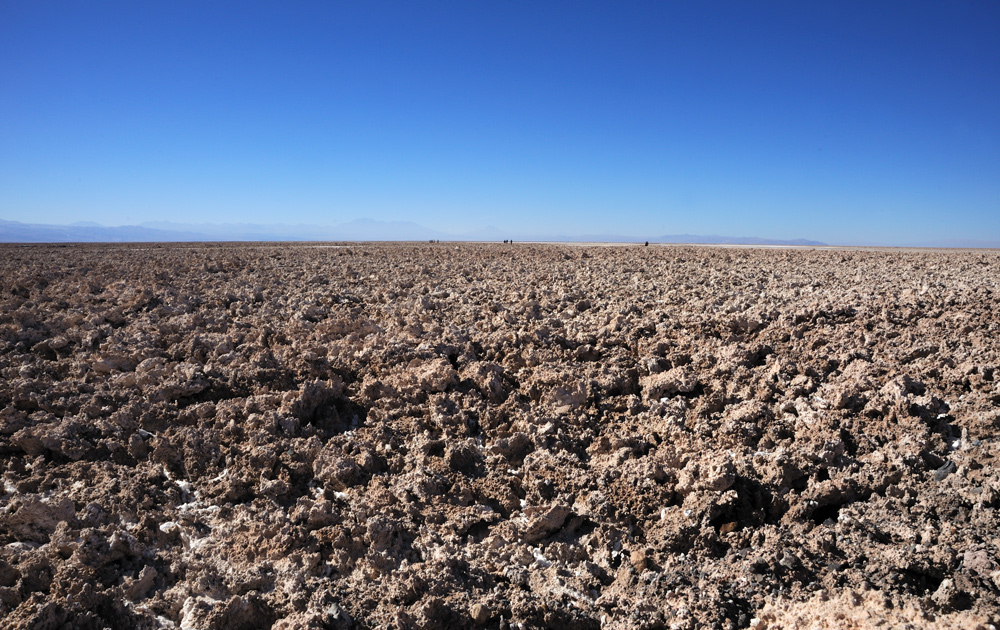
However, not completely. Laguna Chaxa still had some water, and pink flamingos walked in this water with pink volcanos as background.
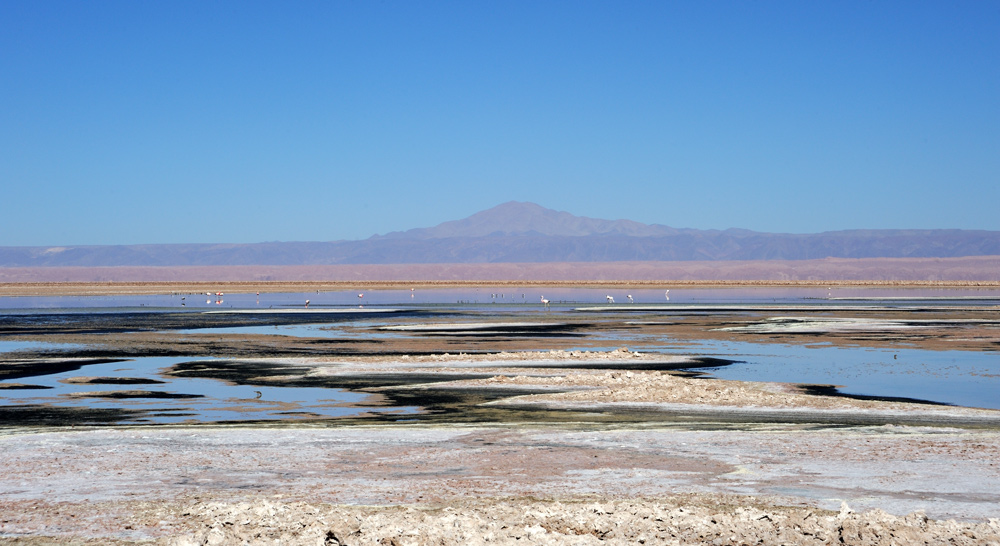


Like many other lakes of Solar-de-Atacama, Laguna Chaxa is not only very salty (up to 25%), but also alkaline (pH is about 9.5). Not really freshwater. However, flamingos are very strong birds, they don’t care about salt, pH, huge temperature drops, and high altitude. They walk in this brine with their head deep in the water and don’t pay any attention to anybody.
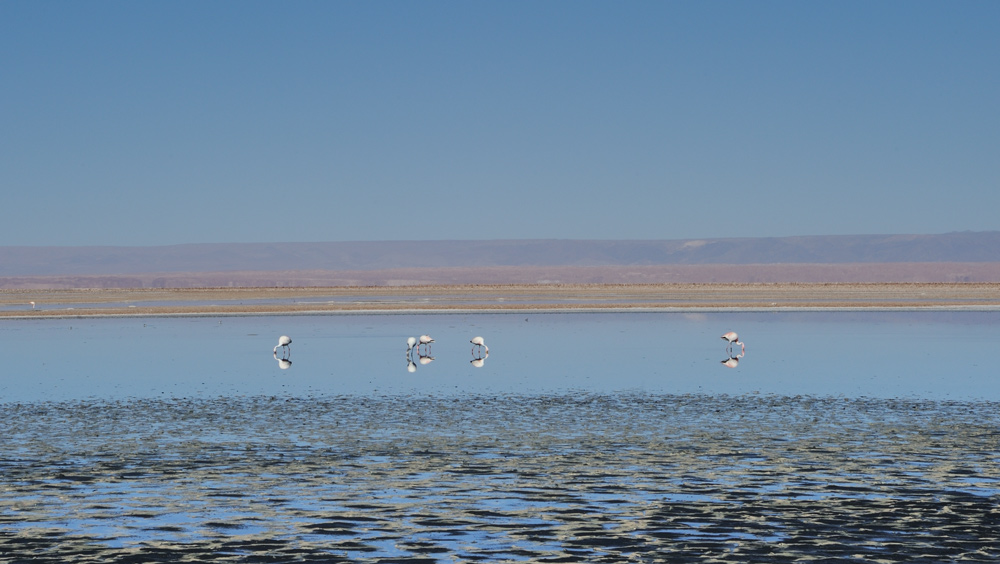

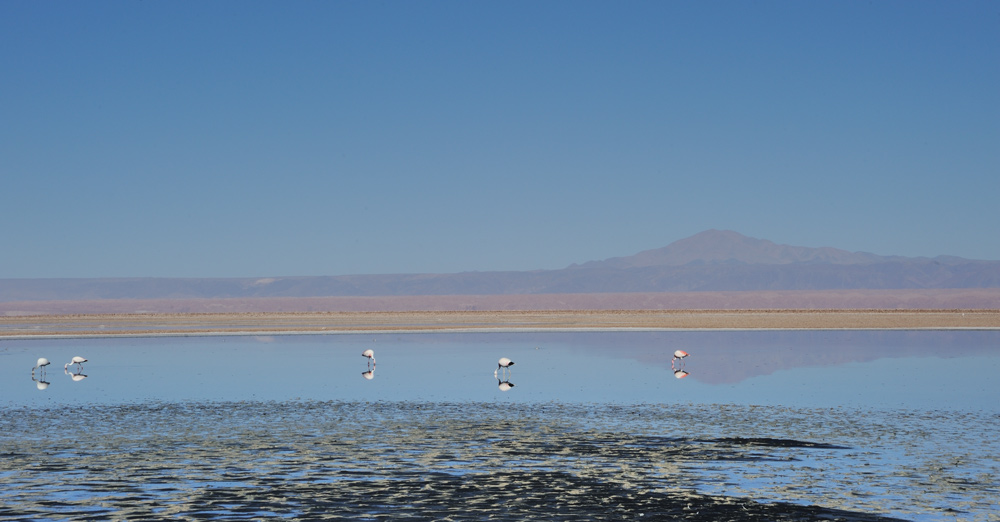
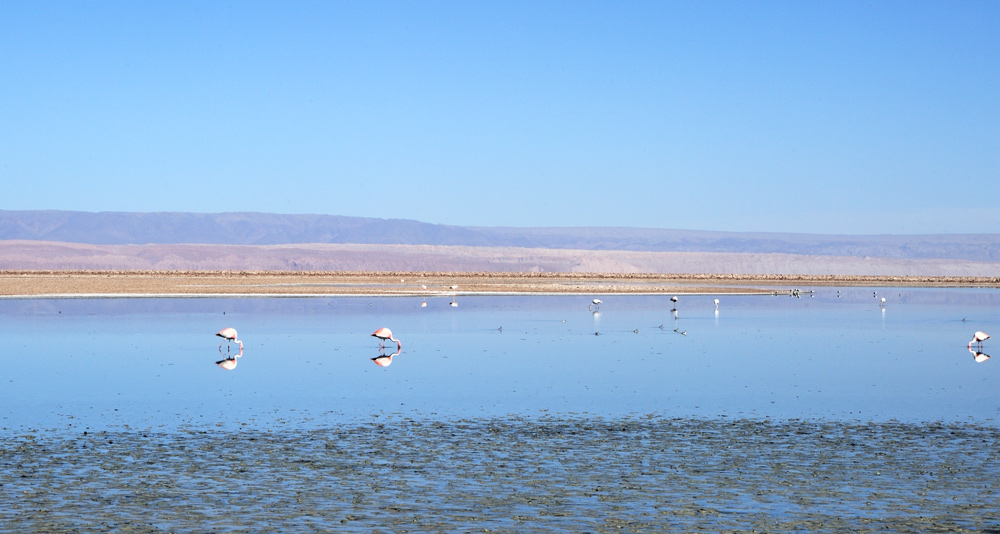
There are six species of flamingo in the world, two of them live in Old World, and four in New Wolrd. Three species live in Chile, and all three can be met on Laguna Chaxa.

This is Chilean flamingo aka Phoenicopterus chilensis.

It has pink knees, and by this can be easily recognized.
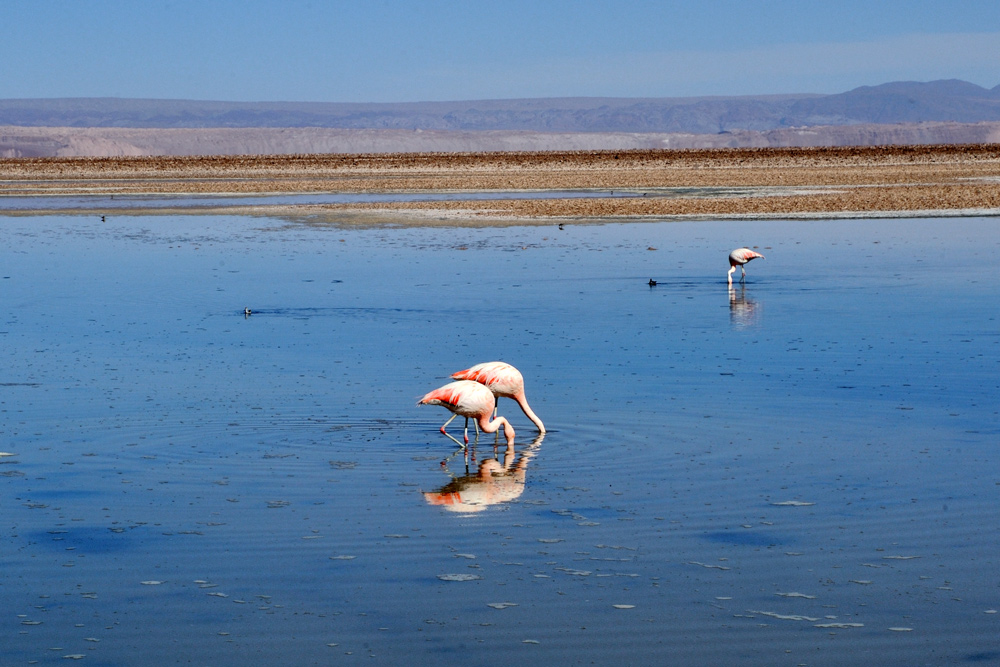
It is a very common species, Chilean flamingo populates all south half of South America, coming far north along the seashores.
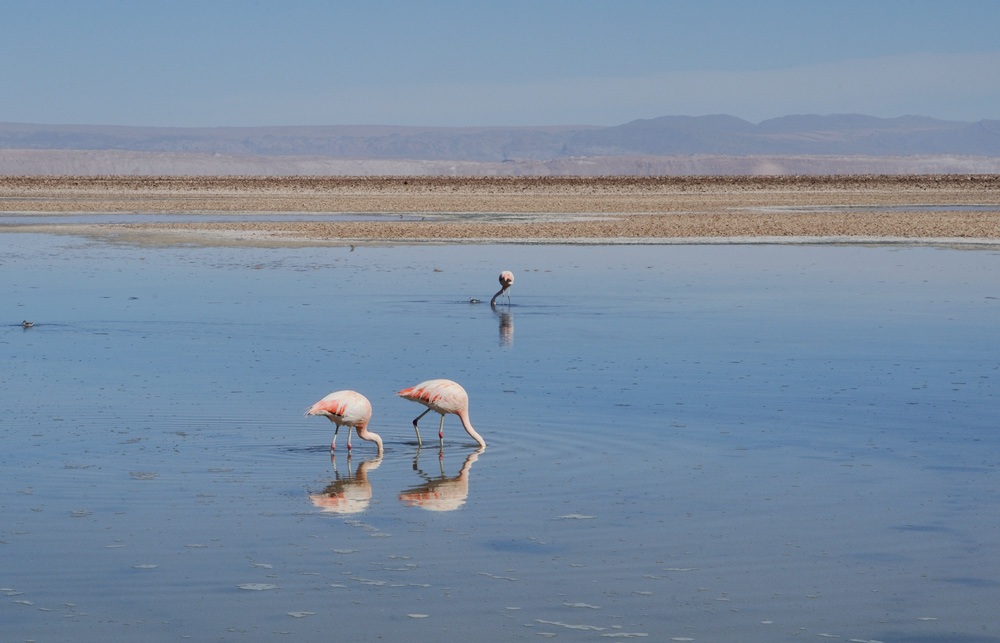
A couple of Chilean flamingo walks knee-deep in the water with their head below the water surface.
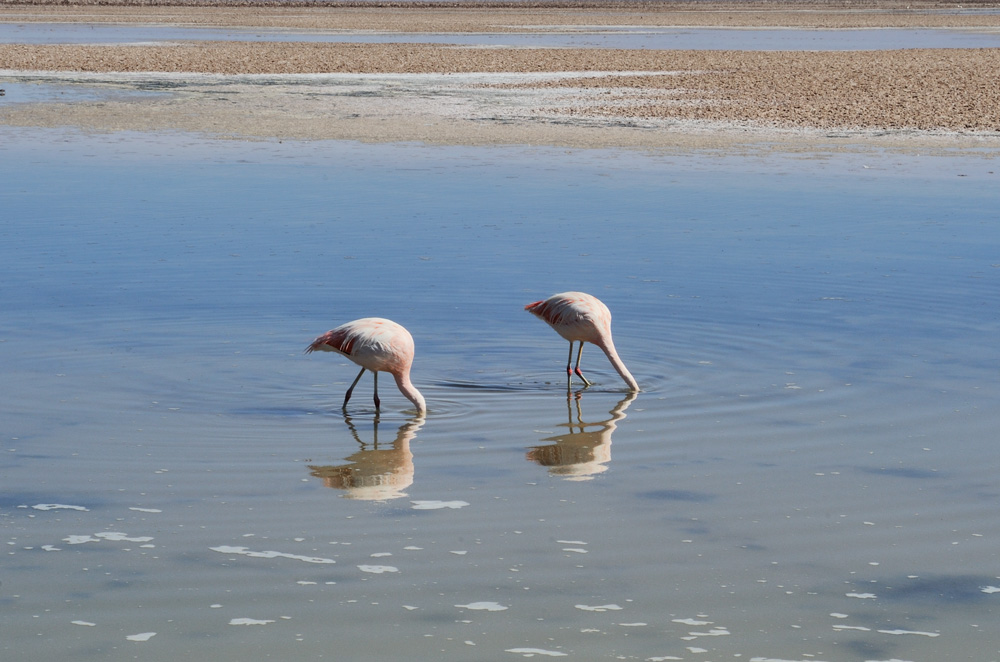
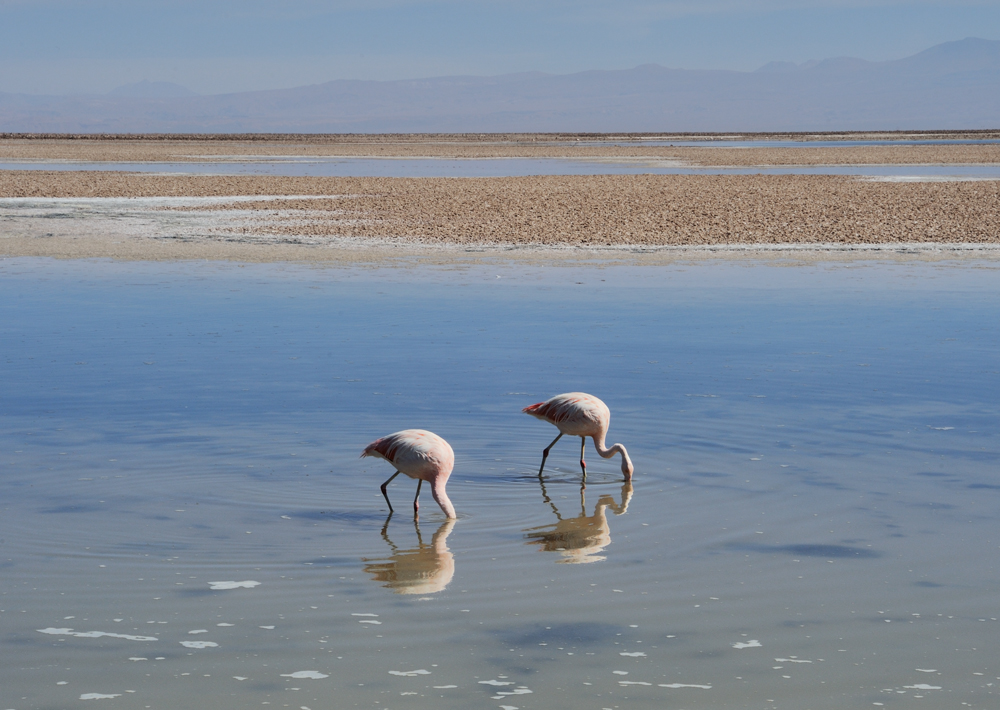
A life with head down is a payment for food preference. Flamingo eat krill (together with phytoplankton that mixed with krill, and all insects, molluscs and other stuff that can be found among krill). Krill is small, the flamingo is huge, so filtration is the only option. Flamingo sip full beak, filter water through the special brush in the maxilla, swallow and repeat everything quickly again and again.
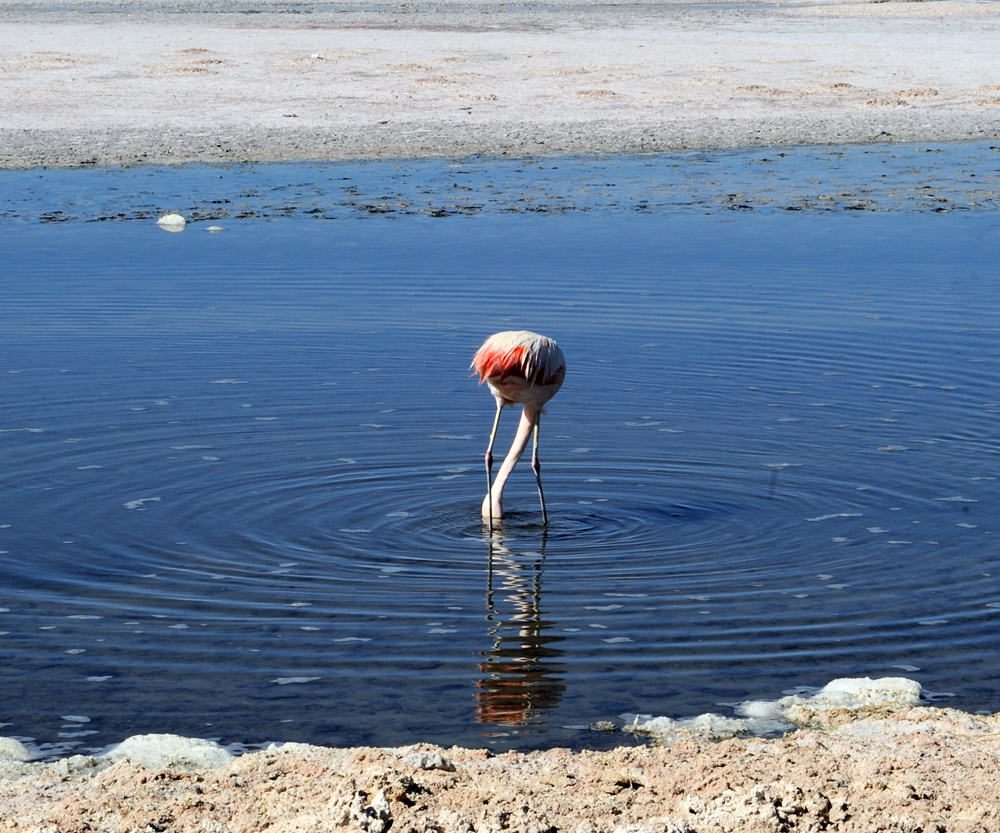
Flamingo feeding sometimes looks like dervish dance. A bird turning around, actively striking out and waving head in the water.
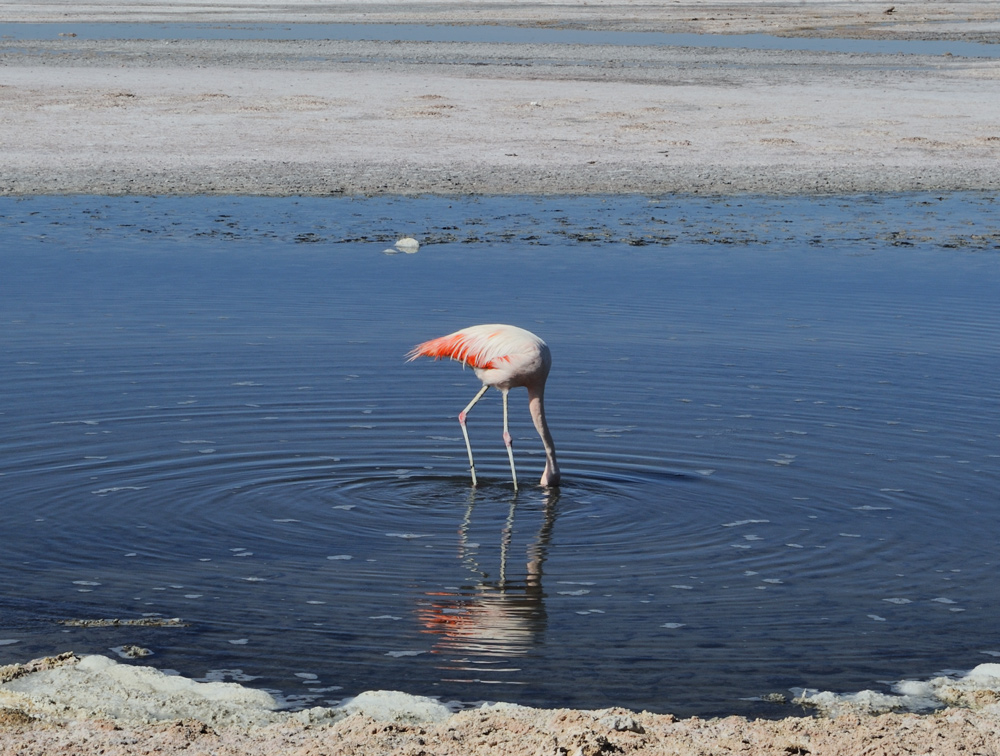
If krill concentrates on inconvenient deep, it should be constantly steered for picking.

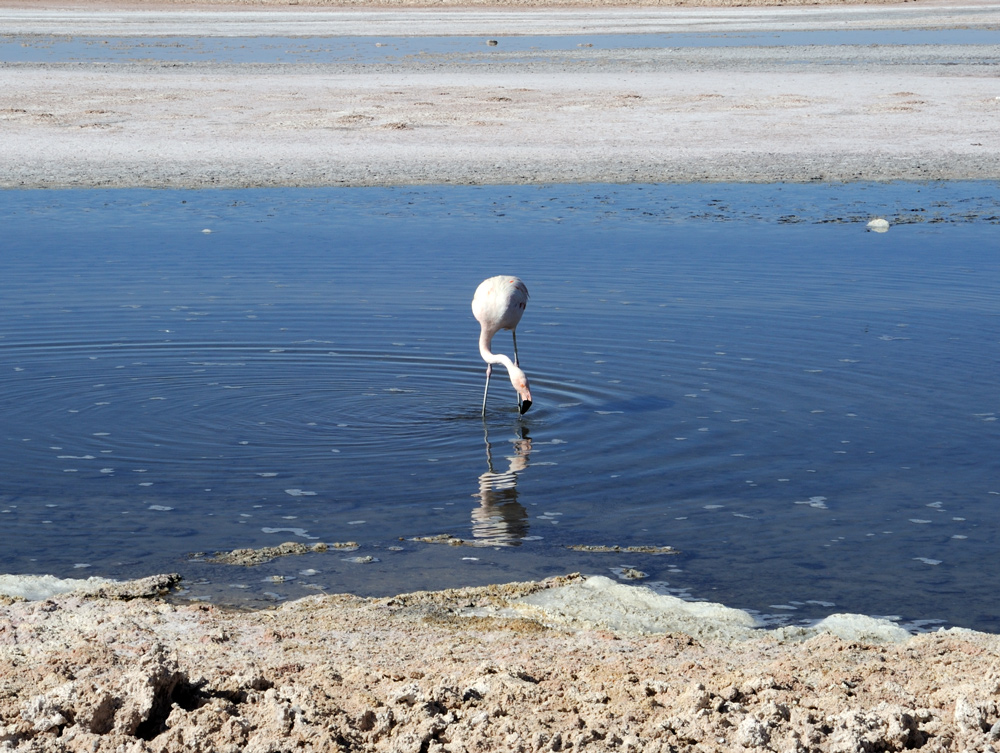

However, if deep is convenient, birds just slowly moved forward.

By the way, flamingo food is interesting as it is. As a person, I may say. The main component of flamingo krill is Artemia, a genus of aquatic crustaceans also known as brine shrimp. They live is salt lakes, have interesting physiology and high resistance to everything. Normally, the brine shrimp populations have males and females, and they are very different. One pair of male’s antennae transformed into huge claws to hold female during sex. Looks like their females don’t’ like sex. Some of them don’t like it so much that organized only female community and practice parthenogenesis, producing children without a male’s presence.
Life in salt lakes is very severe – high salt concentration, the huge temperature drops, sometimes complete water absence.
Artemia loves salt, and for surviving other conditions they invited super-eggs (cysts). At normal conditions, females produce eggs that almost immediately hatch and little nauplius (larvae) swim away. However, if life becomes difficult, females produce metabolically inactive eggs in special chorion coats. Such cryptobiotic eggs easily resist dryness, freezing and even after 2 hour boiling some cyst are fine. However, several minutes in saltwater at normal temperature is enough to activate super-eggs and hatch nauplius.
Not only flamingo love brine shrimps. 2000 tons of dry Artemia cysts are sold around the world every year. They are perfect live food for aquarium fishes that can be kept just on the shelf, they are used in toxicology tests, and they are mostly low maintenance pet and good preset for a child (Sea Monkey are Artemia).
For some reasons, Artemia produces a lot of carotenoids that provide the nice pink colour of flamingo.
Here they are (each Artemia is about 1 cm long):
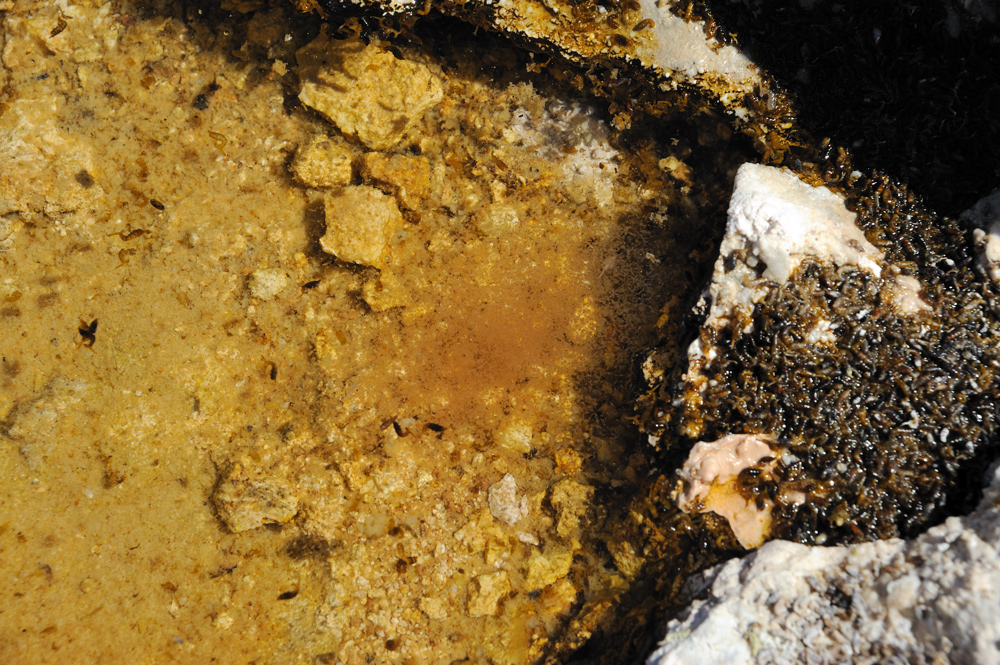
Let’s return to flamingo.

This is Andean flamingo aka Phoenicoparrus andinus. It is one of the rarest flamingoes. They live n Andes only, spend summer on salt lakes and winter on lower marshes. They are good flyers and can cover 700 miles per day.
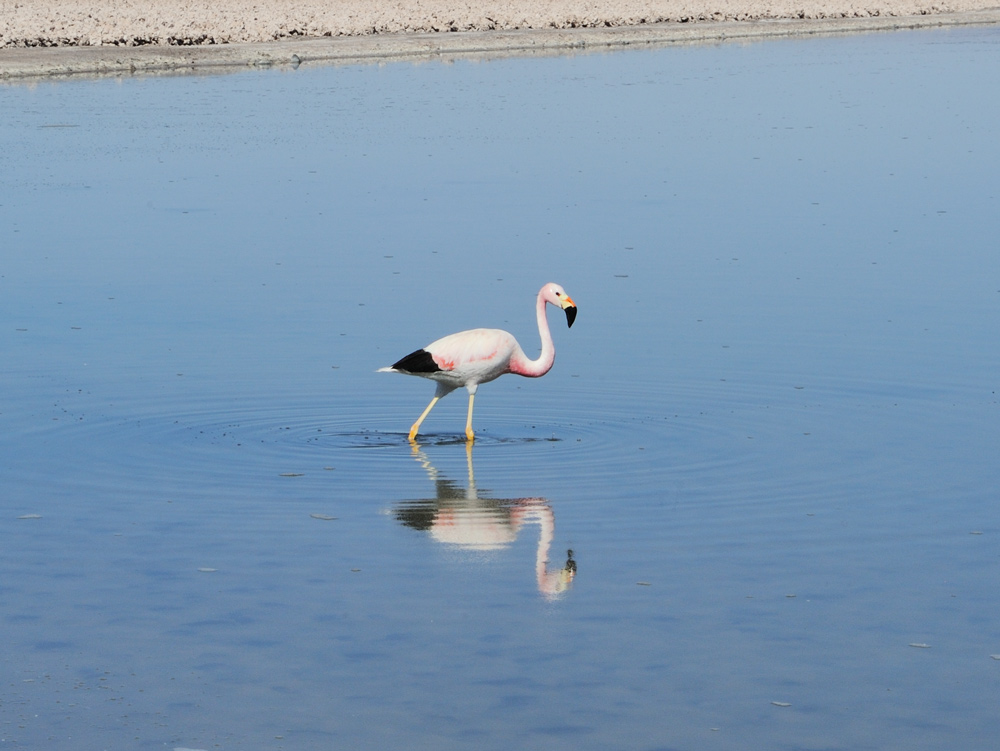
Yellow legs, black butt, and a huge bill – yellow top, black bottom.

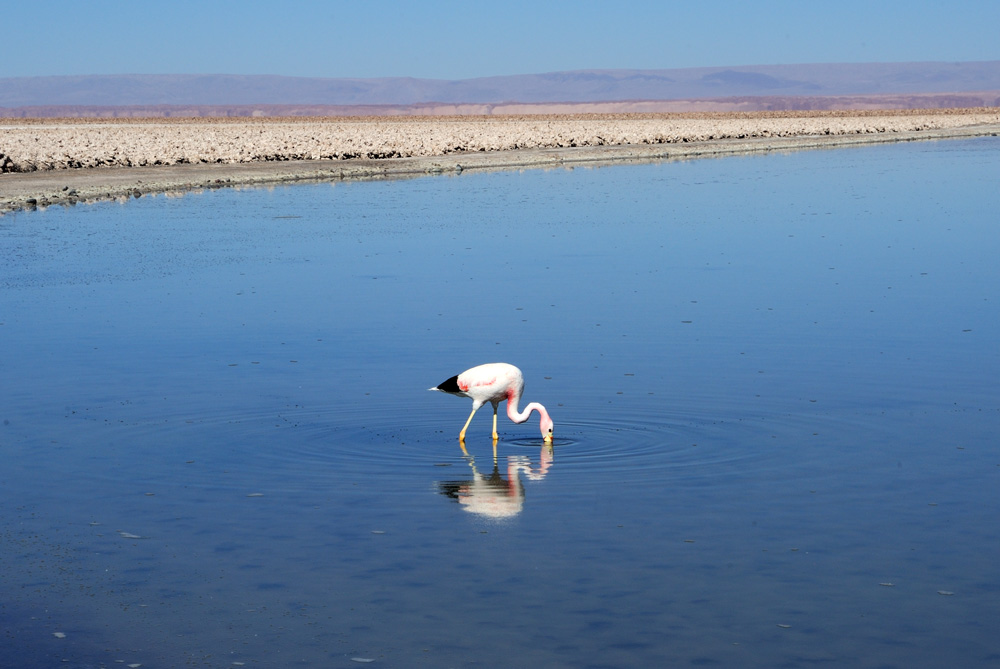
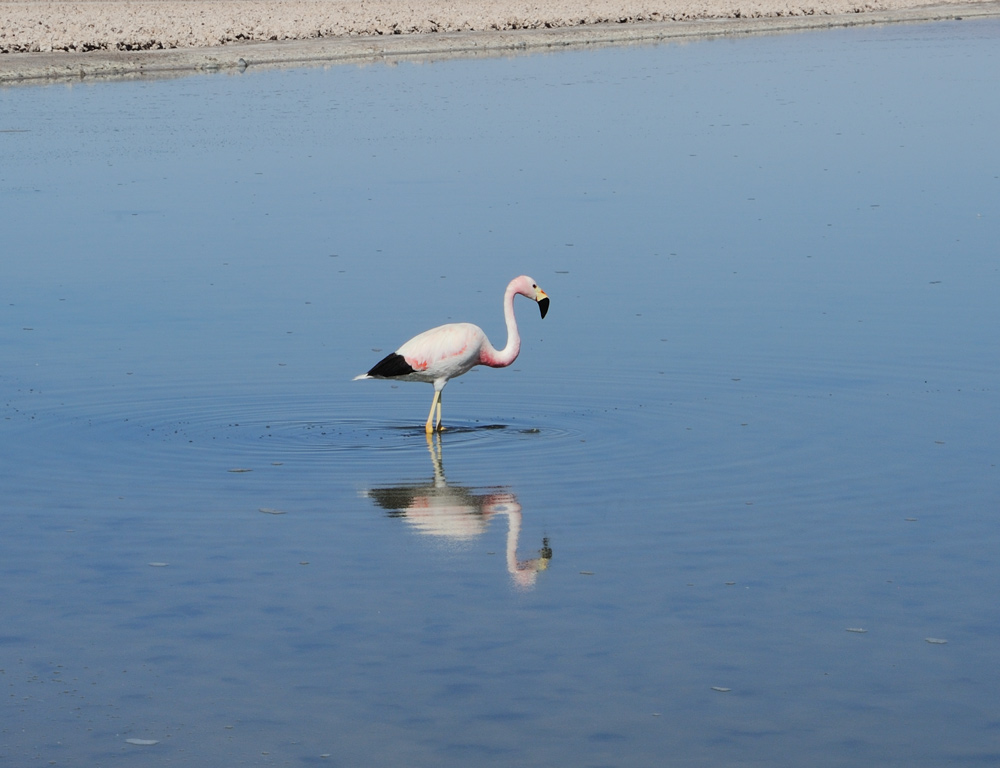

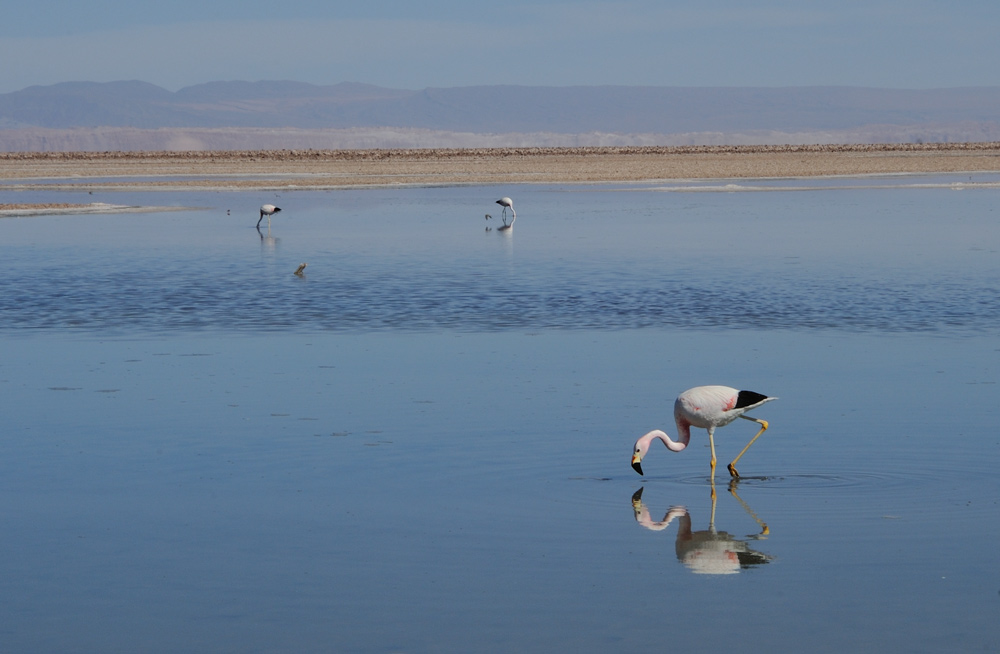
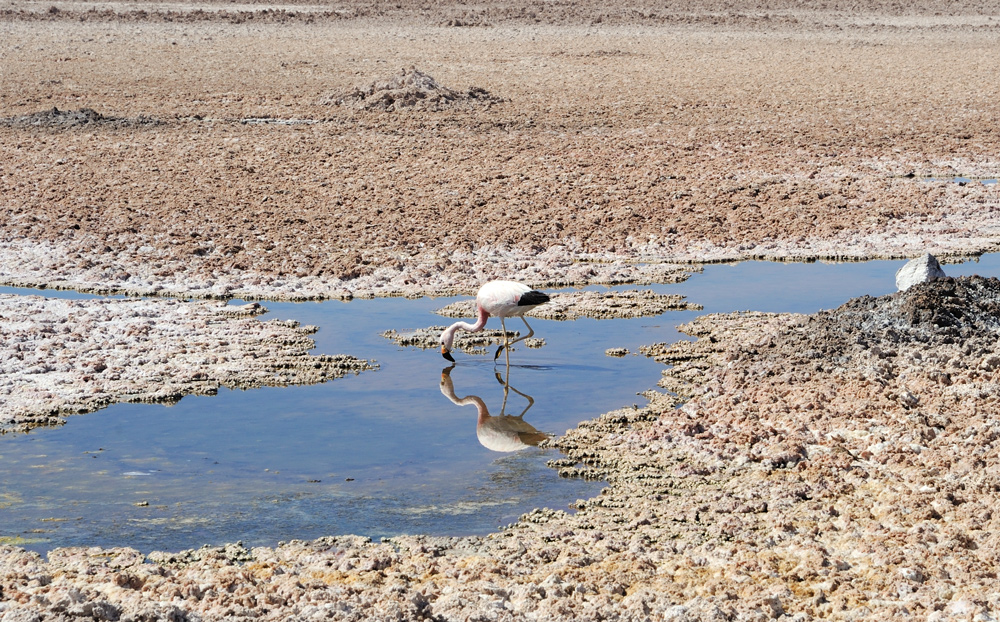
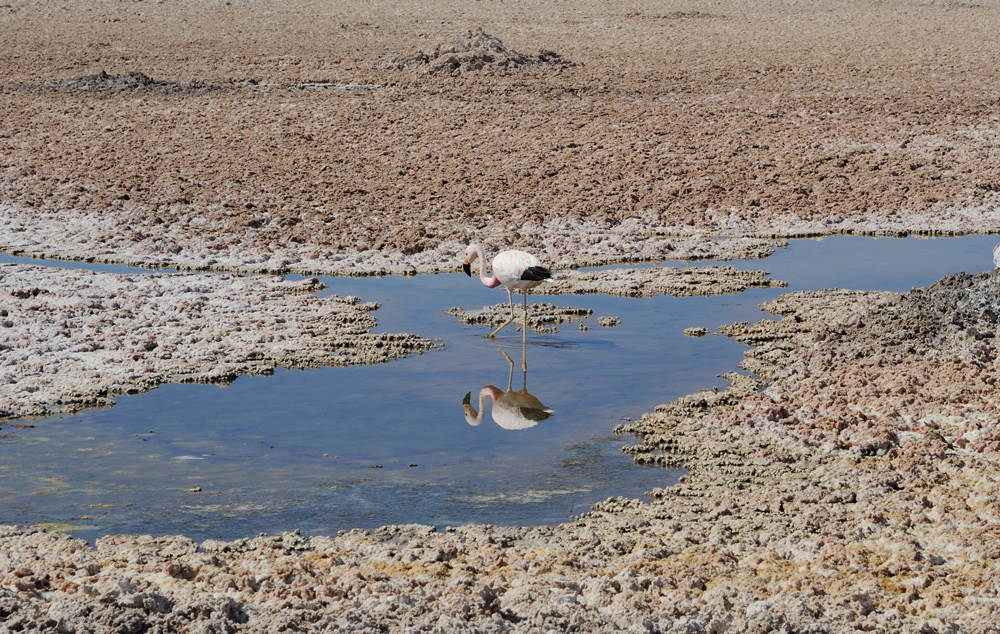
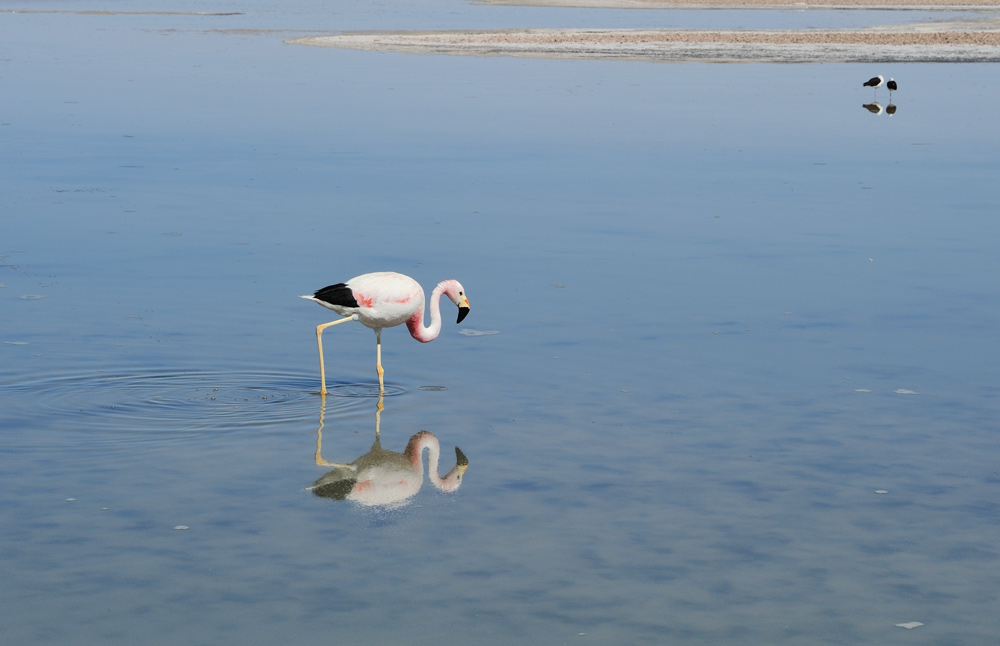
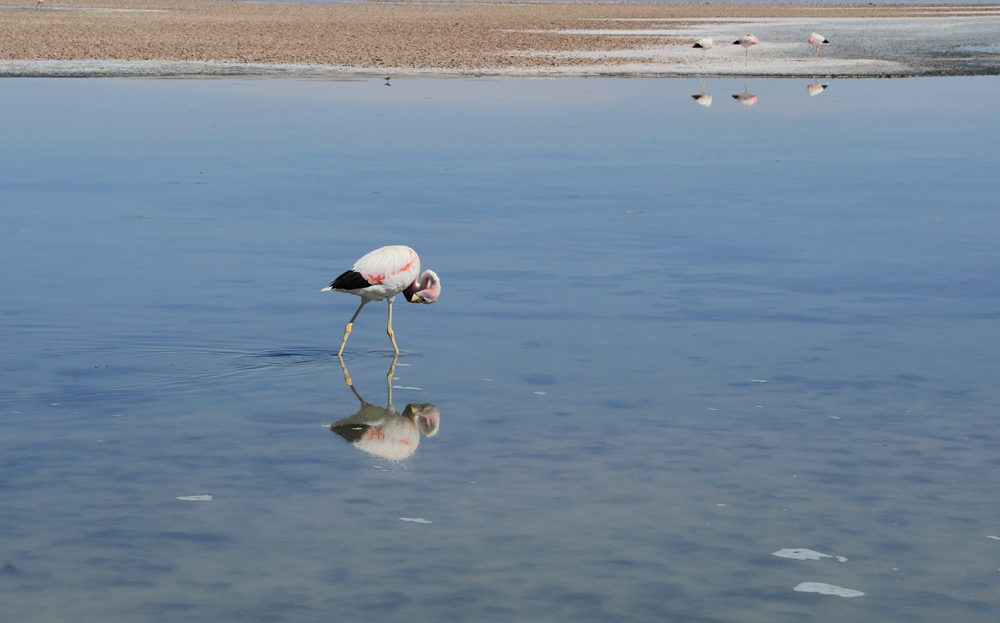
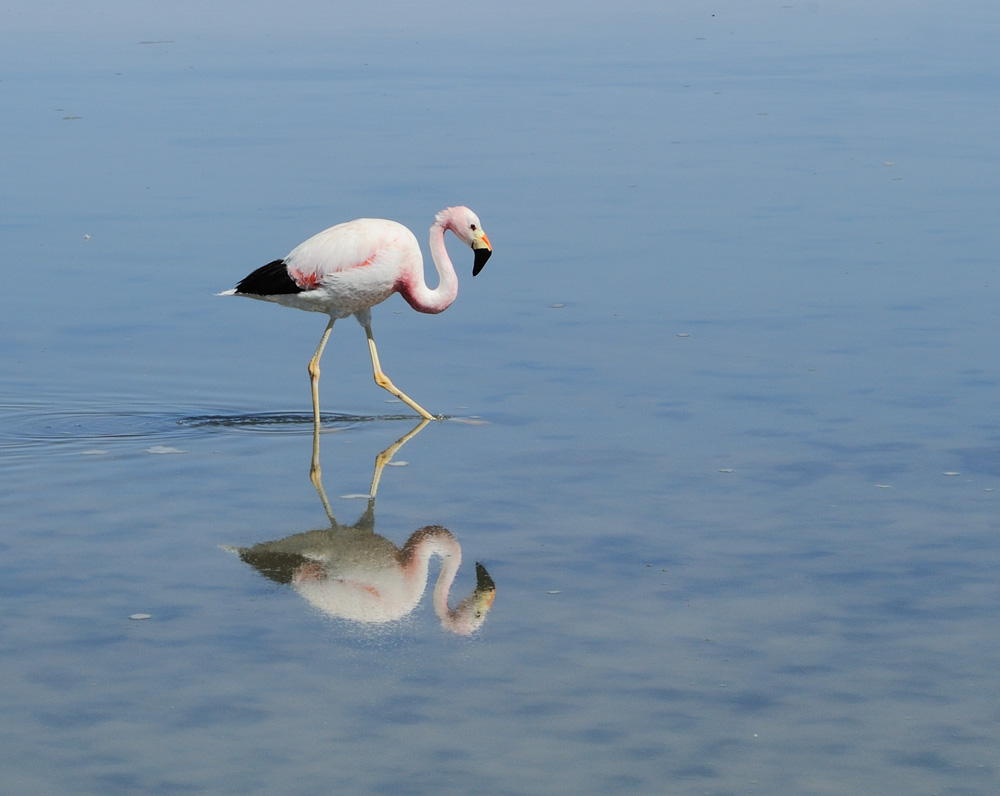
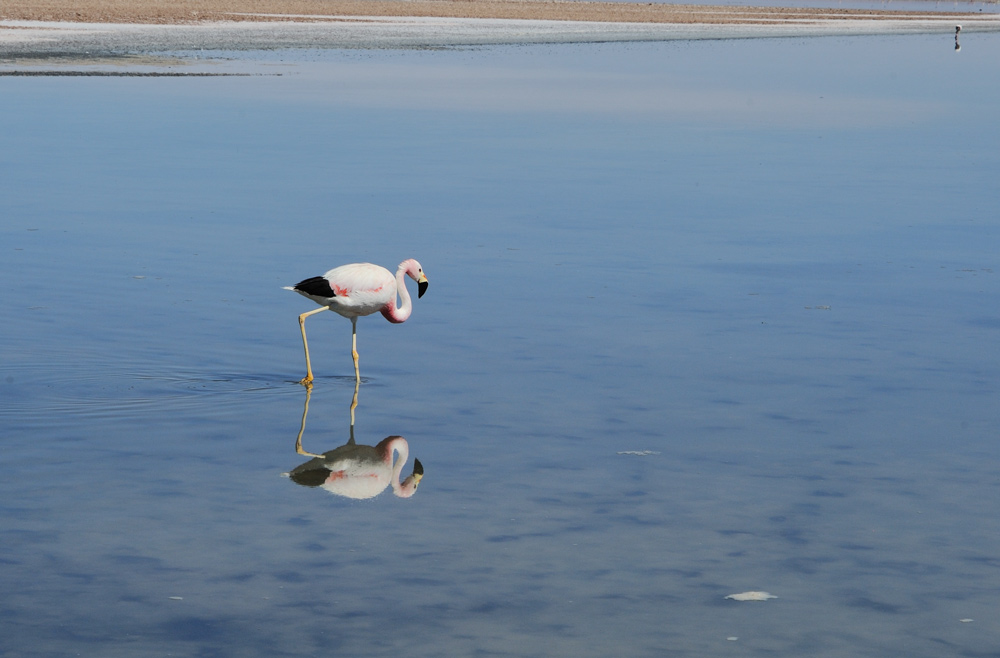
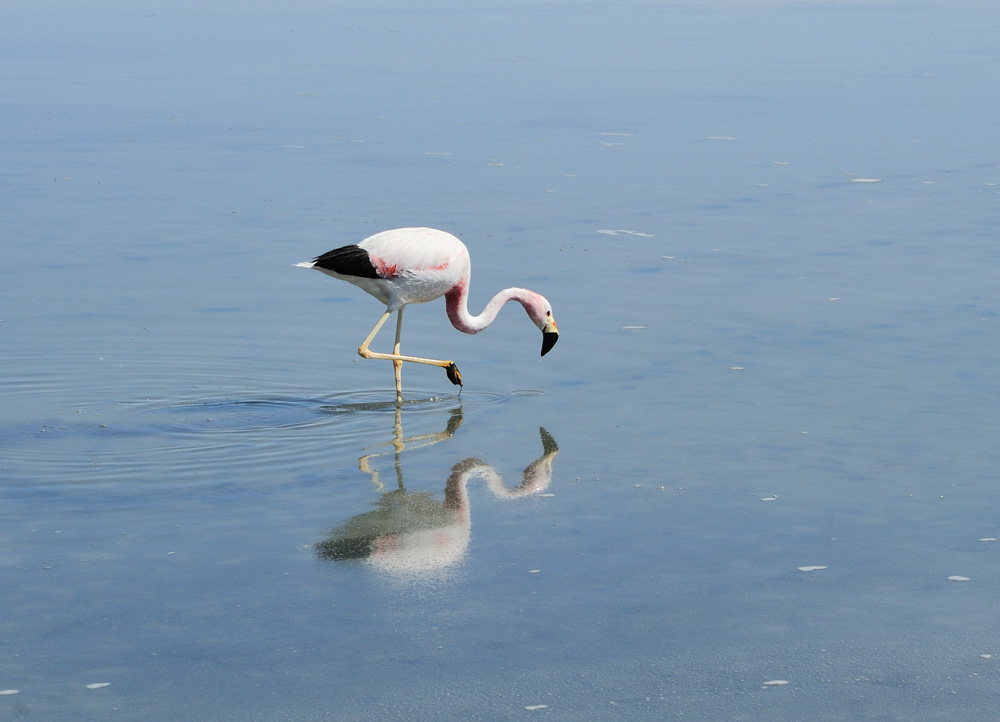

The third species that can be found on the lake is James’s flamingo aka Phoenicoparrus jamesi. It lives on high-altitude Andean plateaus. It is very similar to Andean flamingo, but a little smaller, doesn’t have such black butt and has lass black colour on the beak.
Unfortunately, I don’t have their close-up photo, only far away.

Underwater flamingo trails.
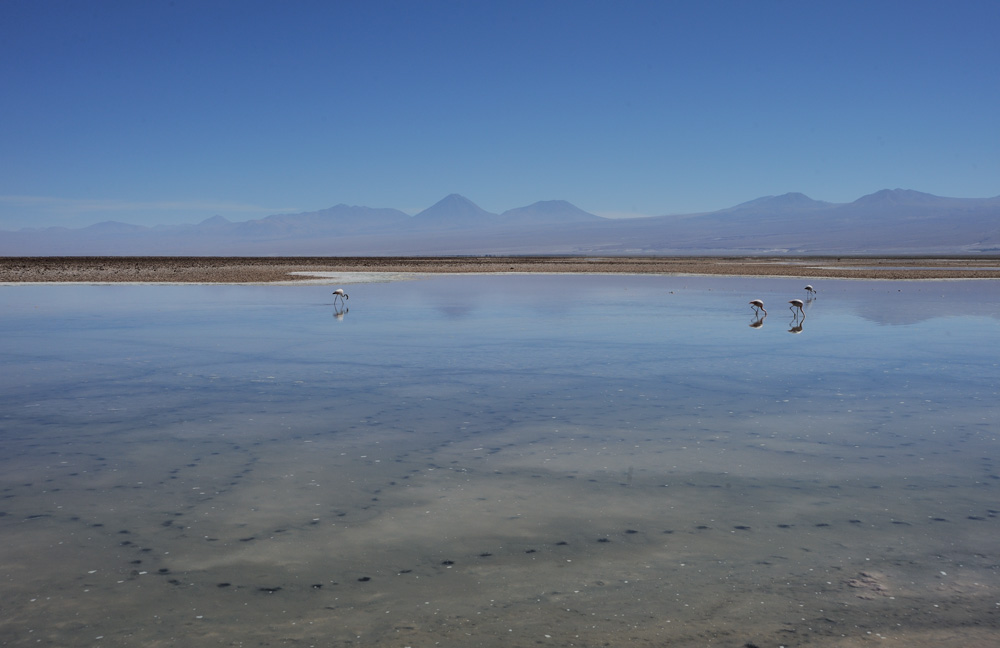
More view with flamingo.
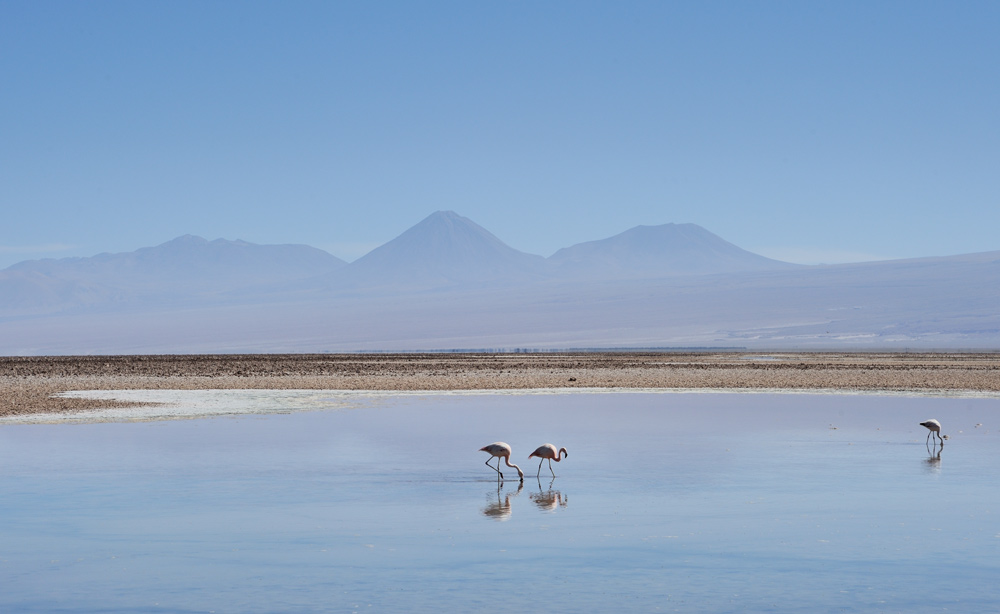
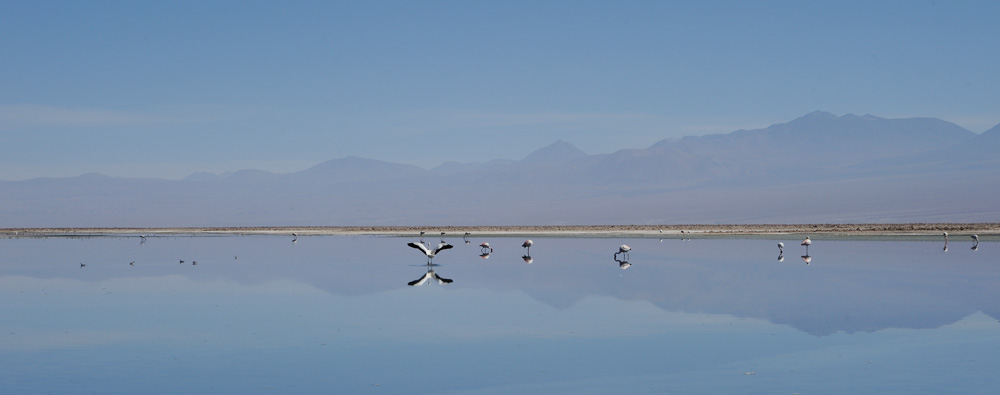
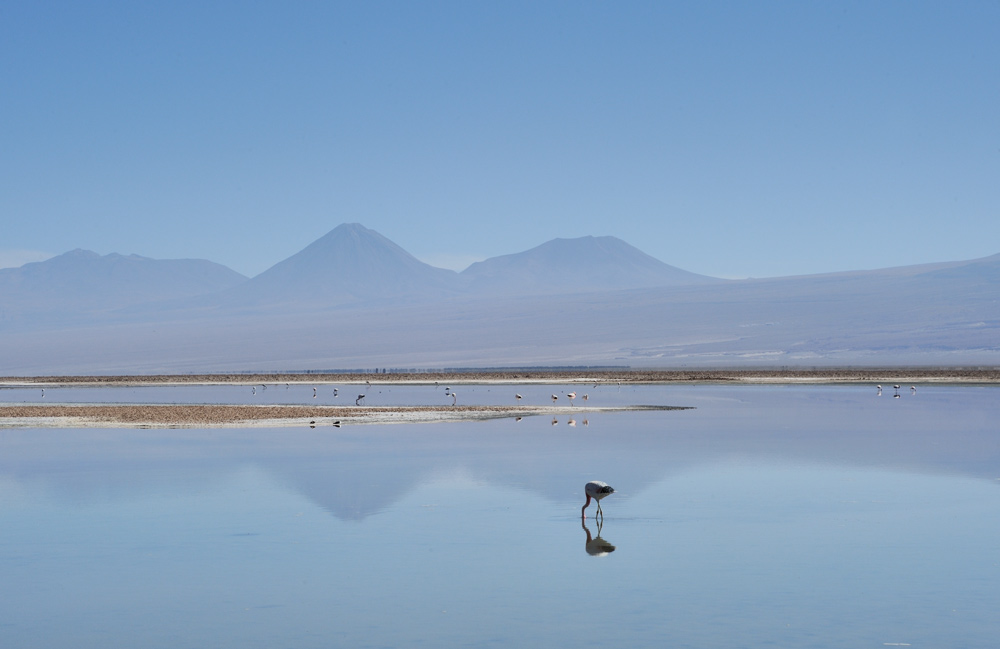
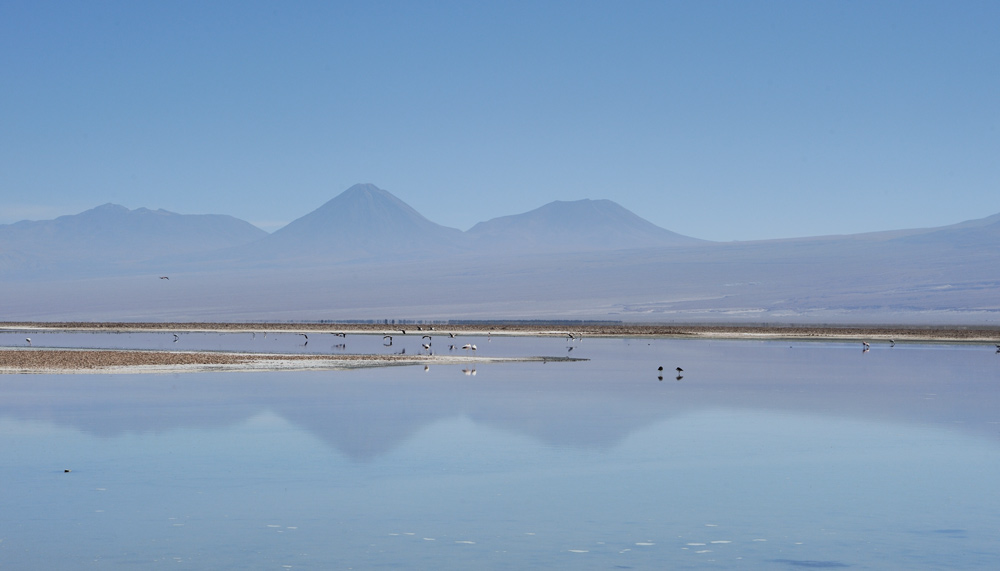
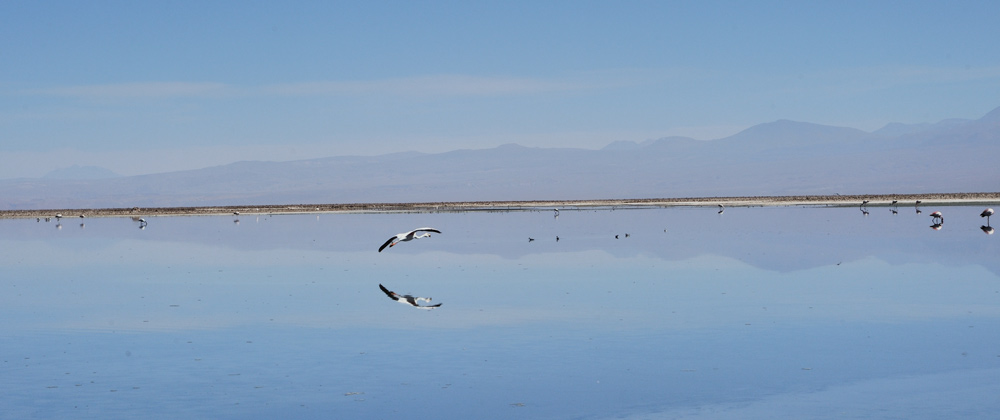

To be continued…